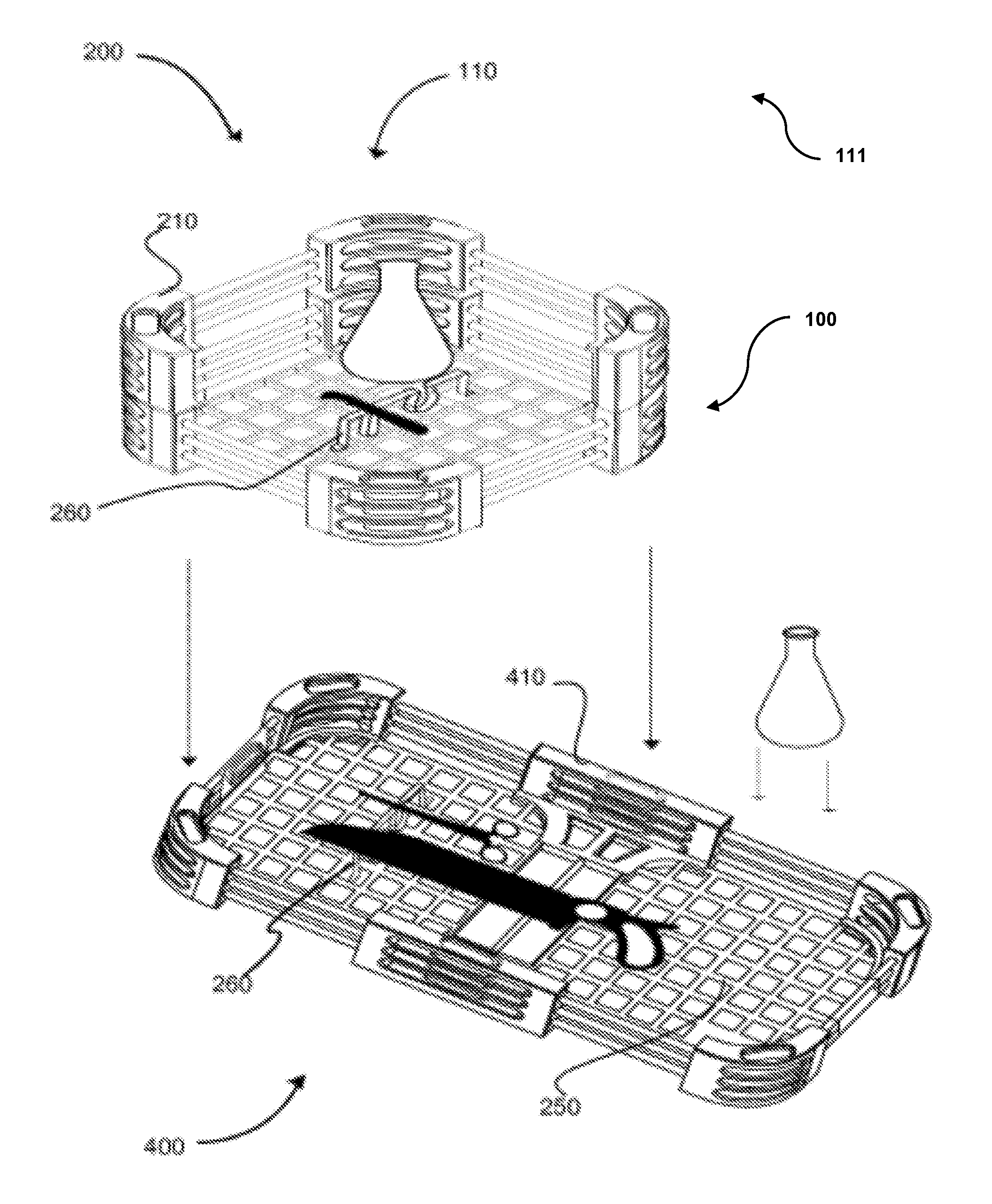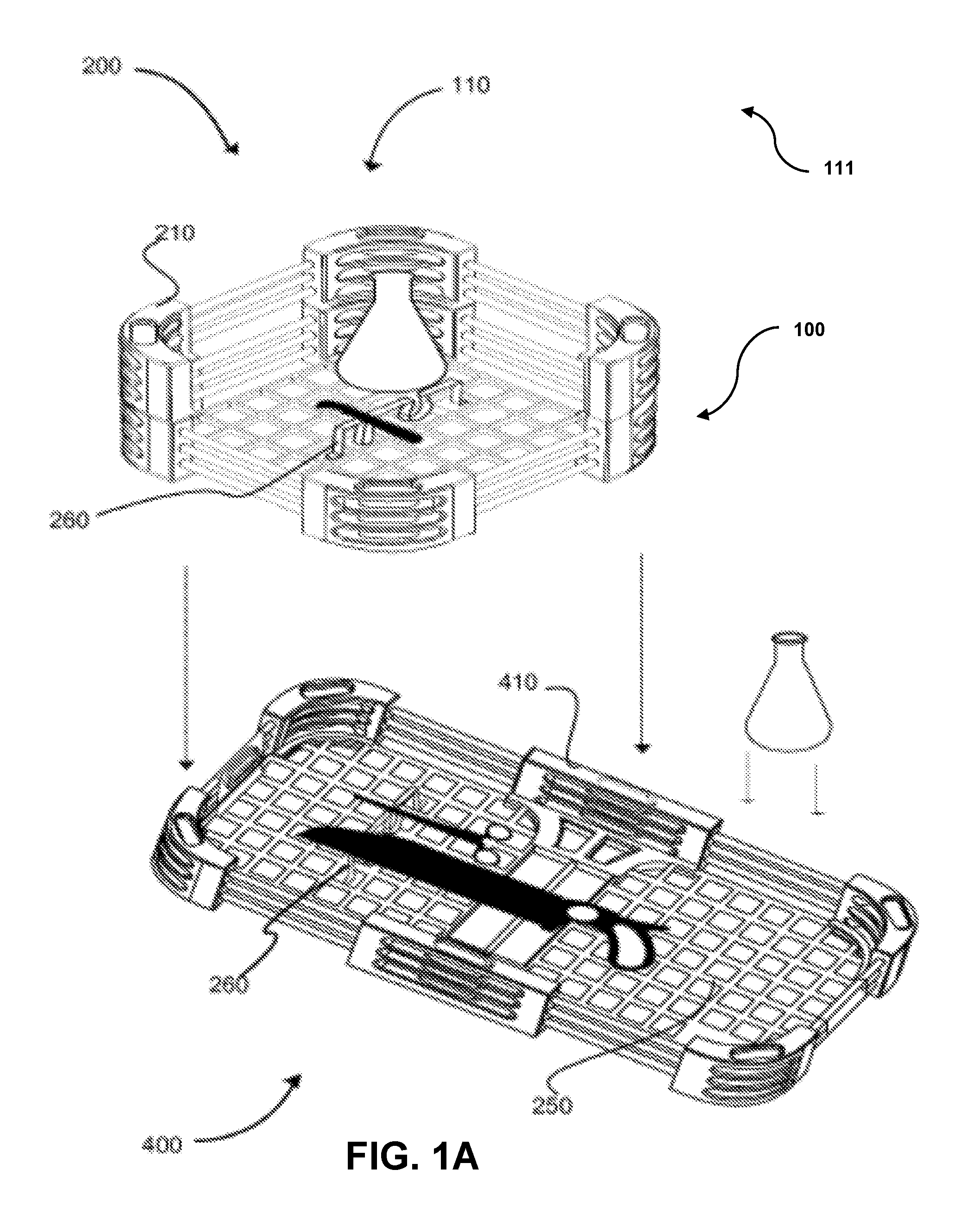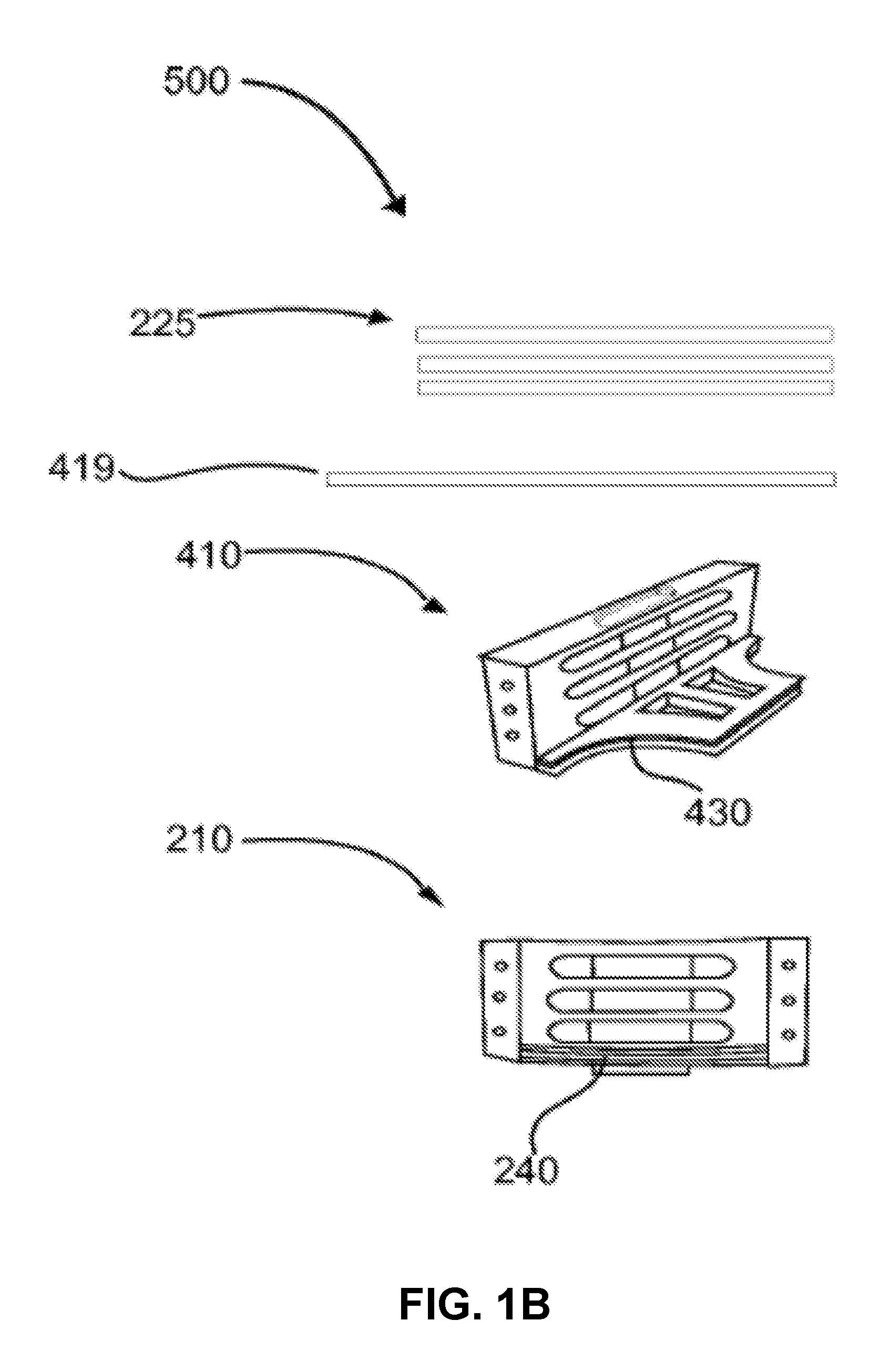Modular sanitation tray systems
a sanitation tray and module technology, applied in the field of sanitation trays, can solve the problems of increasing drying time, reducing proper sanitation, and insufficient removal of particulate matter and blood borne pathogens, so as to improve sanitation capabilities, reduce shipping costs, and reduce drying time
- Summary
- Abstract
- Description
- Claims
- Application Information
AI Technical Summary
Benefits of technology
Problems solved by technology
Method used
Image
Examples
Embodiment Construction
[0023]Referring now to FIG. 1A, showing a perspective view of modular sanitation tray system 100 of the present invention. Also shown is an exploded view of a corner receiver 210; three first dowel 225 (both illustrated in further detail in FIGS. 2A and 2B); side receiver 410; and second dowel 419 (both illustrated in further detail in FIGS. 4A and 4B). Examples of laboratory equipment frequently sanitized are shown within the tray. Modular sanitation tray system 100 comprises at least one first tray 200; optionally, at least one second tray 400, and optionally at least one rack 250. Modular sanitation tray system 100 may further comprise an optional instrument holder 260; and an optional handle 405 (shown and discussed in FIGS. 4 and 5). Finally, modular sanitation tray system 100 may optionally comprise a cover or lid (not shown) for added protection and increased sanitation capacity of modular sanitation tray system 100.
[0024]Within the present figure, modular sanitation tray sys...
PUM
| Property | Measurement | Unit |
|---|---|---|
| angle | aaaaa | aaaaa |
| shape | aaaaa | aaaaa |
| shapes | aaaaa | aaaaa |
Abstract
Description
Claims
Application Information
 Login to View More
Login to View More - R&D
- Intellectual Property
- Life Sciences
- Materials
- Tech Scout
- Unparalleled Data Quality
- Higher Quality Content
- 60% Fewer Hallucinations
Browse by: Latest US Patents, China's latest patents, Technical Efficacy Thesaurus, Application Domain, Technology Topic, Popular Technical Reports.
© 2025 PatSnap. All rights reserved.Legal|Privacy policy|Modern Slavery Act Transparency Statement|Sitemap|About US| Contact US: help@patsnap.com



